Shanghai
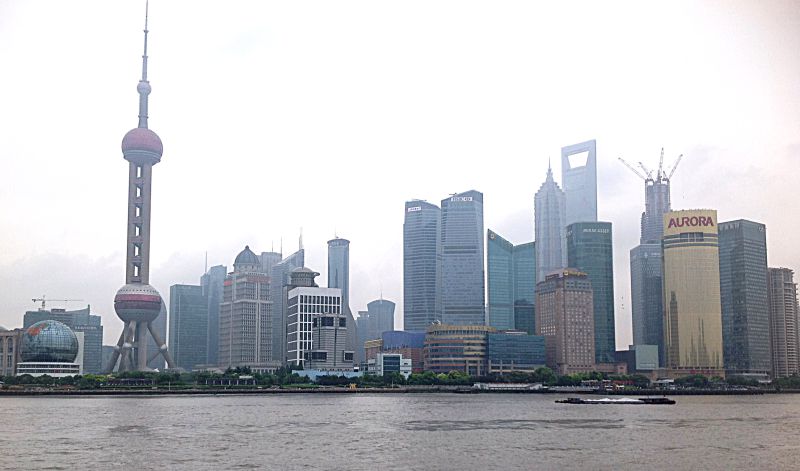
Located in the Yangtze River Delta which adjoins the East China Sea, Shanghai is a major administrative, shipping and trading city, the largest in China, with over 24 million people. Shanghai flourished in the 19th century due to European influence, becoming the ‘Paris of the Orient’. Recovering from the effect of restrictions imposed by the former Communist regime, the view of the Pudong skyline is testament to the massive regeneration in the last two decades, reflecting the boom in economic development in China.
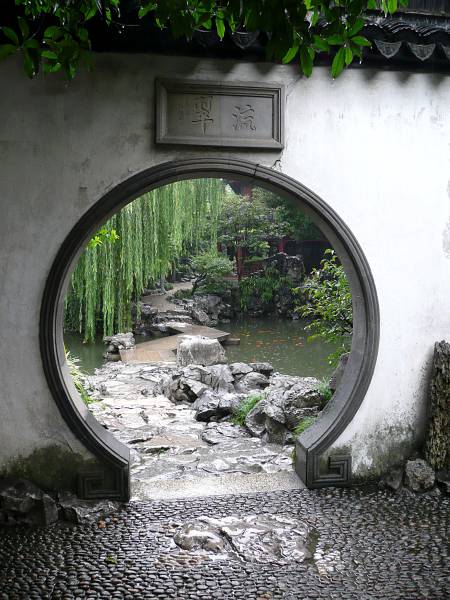
Our modern hotel, the Renaissance Shanghai Yuyuan Hotel, was really well situated being only a short walk to the restored old city centre where the Yuyuan Garden is the chief attraction.

The garden encompasses 2 hectares with six separate sections, divided by ‘dragon walls’ with undulating gray tiled ridges, each terminating in a dragon’s head. Created during the Ming Dynasty by a wealthy official, this garden epitomises the best of a Chinese garden with pavilions, halls, ponds, rockeries, trees and flowers.

One of the pavilions, which is now the oldest teahouse in Shanghai, is built in the middle of a lotus pond and is reached by means of the Nine-Turn Bridge. According to principles of feng shui, bad spirits cannot negotiate such a bridge as they only travel in a straight line.
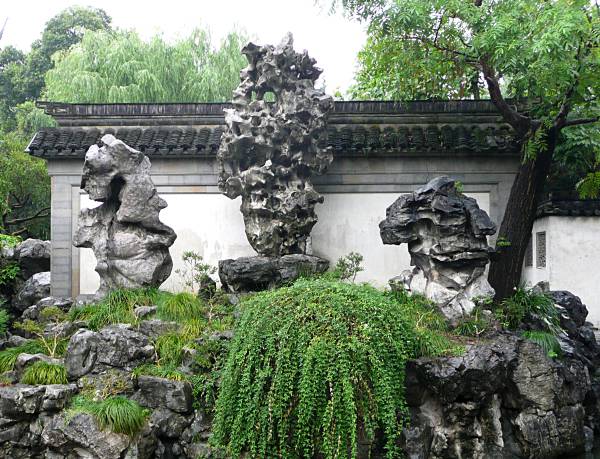
Other important features are the Exquisite Jade Rock and the Ginko (Maidenhair) Tree which is thought to be over 400 years old. The rock weighs about 5 ton and characterised by a grotesque, wrinkled appearance, and numerous holes eroded by water.
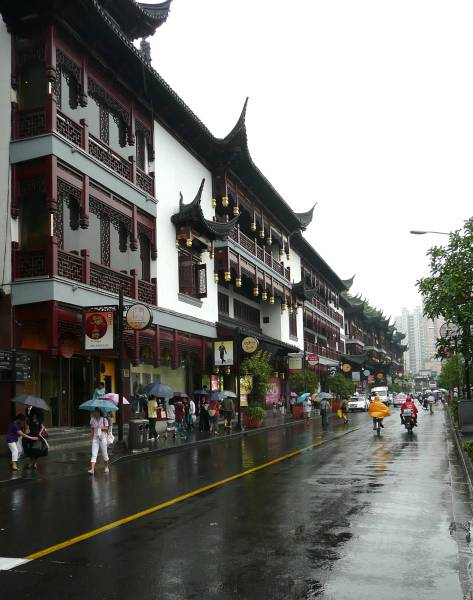
Nearby is the Yuyuan shopping district, with malls and stores selling food and beverages, jewellery, jade, antiques, art, crafts and souvenirs as well as pharmaceuticals, real estate and import/export goods. This area has been restored to reflect the Ming Dynasty architecture.
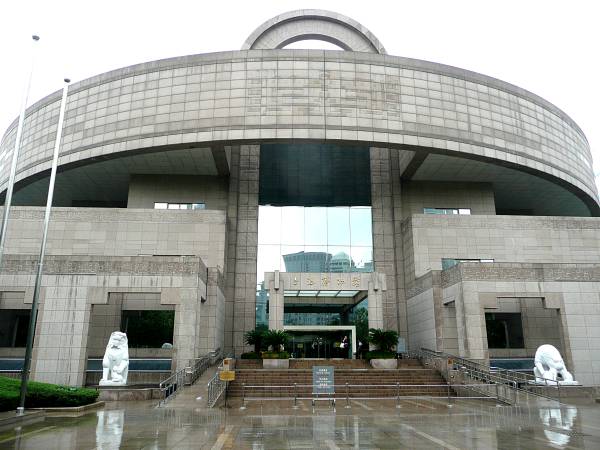
Our first day in Shanghai also included a visit to the Shanghai Museum of ancient Chinese art, a collection of over 1000,000 objects, about 120,000 of which are precious national-graded works of art. Its rich and high-quality collection of ancient Chinese bronze, ceramics, painting and calligraphy is world renowned. The building has a unique architectural design of a round top with a square base, symbolising the ancient Chinese philosophy that the square earth is under the round sky.
It has eleven galleries and three special temporary exhibition halls. My favourite collection was the Minority Nationalities Art Gallery which included costumes, textiles, embroideries, metal wares, sculpture, pottery, lacquer wares, cane and bamboo plaited vessels as well as wooden masks.
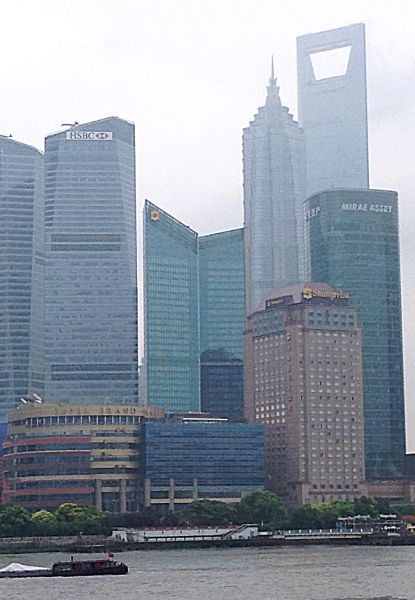
After lunch we had some free time to walk along the Bund and then took a short cruise tour on the Huangpu River. This gave us close-up views of the wharfs, busy shipping traffic, two suspension bridges and the contrasting architecture on each side of the river. Shanghai’s urban area is bisected by the river, a man-made tributary of the Yangtze. The historic centre lies on the western side while the new financial sector is on the east (Pudong).
The Pudong district displays a wide range of skyscrapers, many of which rank among the tallest in the world. The most prominent examples include the Jin Mao Tower, the taller Shanghai World Financial Center (nicknamed “the bottle-opener”), the distinctive Oriental Pearl Tower, and the newly finished Development Tower. The Shanghai Tower, under construction since 2008 is the tallest building in China, with a height of 632 metres (2,073 ft).
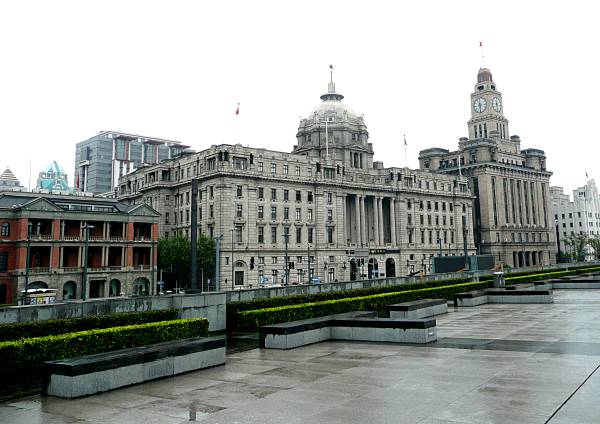
The Bund, located on the west bank of the Huangpu River, contains a rich collection of early 20th-century architecture, ranging in style from the Neoclassical HSBC Building which was once the centre of municipal government for Shanghai, to the Art Deco Sassoon House. A number of areas in the former foreign concessions are also well-preserved, the most notable ones being the French Concession. Shanghai has one of the world’s largest number of Art Deco buildings as a result of the construction boom during the 1920s and 1930s.
After dinner we caught the Portman Acrobatic Show at the Shanghai Centre Theatre. As well as acrobats, there were jugglers, contortionists, illusionists, trapeze artists, feats of balancing and a daredevil motorcycle display. The performers were extremely skilful and entertaining, keeping us on the edge of our seats with their mastery of the various feats.
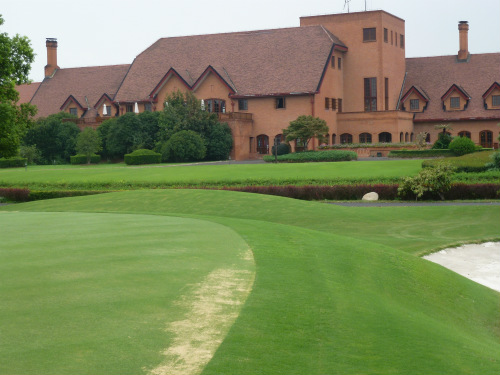
One of the advantages of a bespoke tour is that we could make sure Vin was able to enjoy a round of golf. We booked this directly with the Club before leaving Australia. The Shanghai Country Club is about an hour west of the city in the Qingpu district, near the Dian Shan lake. The clubhouse is rather grand, modelled on the 19th century British colonial style. Established in 1990, the challenging par 72 course was designed by world renowned golf architect Robert Trent Jones Jr .
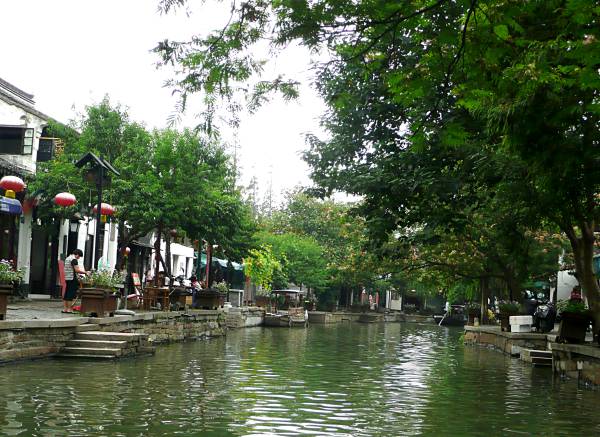
Meanwhile our guide, Suzy, took me to the Zhujiajiao ancient water town, nearby, which is more than 1700 years old. Unique old bridges cross small rivers shaded by willow trees, and many buildings from the Ming and Qing Dynasties still line the riverbanks. The towns economy was once based on rice and clothing transported on boats from the surrounding countryside.

Today, old historical buildings such as rice shops, banks, spice stores and even a Qing dynasty post office can still be found. However, the influx of tourists who like to wander the narrow old streets crammed with teahouses, cafes, craft and clothing shops is the main source of income for the inhabitants, so much so that the main square is now home to modern shops and cafes such as KFC! I admit we did go there to use their bathroom.
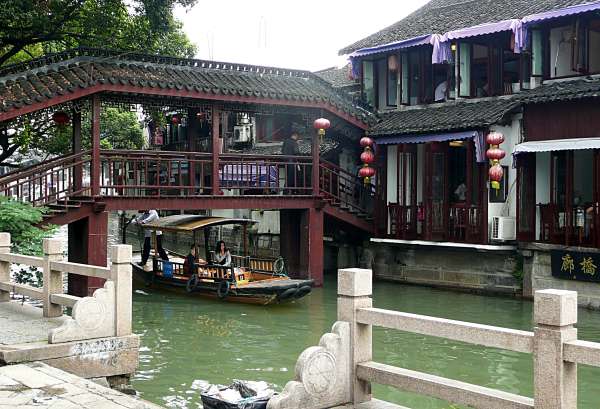
One of the favourite things to do is to take a gondola boat ride along the canals to see the various tea houses, some of the 36 bridges and the homes of the local people.
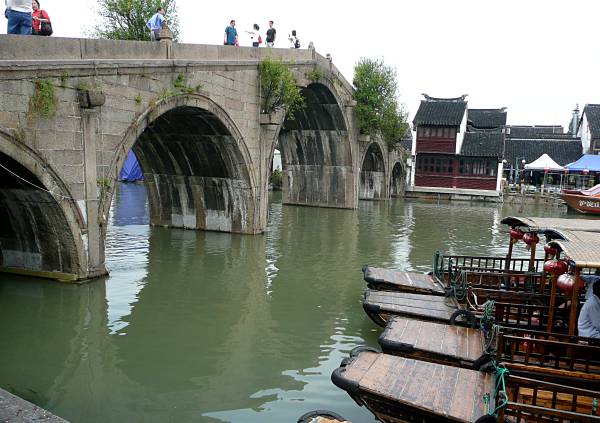
The most iconic bridge is the 70-metre long Fangsheng bridge, which has 5 symmetric arches, peaking at 5.8 metres. It was originally built in 1571, and then rebuilt in 1812. The central arch is decorated with a stone relief of eight dragons surrounding a pearl, and the pillars at the ends are sculpted into lions. It’s the largest stone arch bridge in Zhujiajiao.
Two days is hardly enough to scratch the surface of such a busy and vibrant city as Shanghai. But we were booked on a flight to Guilin to see a more rural side of China. Now that Shanghai has the new 72 hour free visa for travellers using the city for stopovers on their international flights, we must make sure we take the opportunity to visit there again.
Related articles
- See The Spectacular Views From The 15 Tallest Buildings In The World (businessinsider.com)
- The Water Towns (thesimpleadventure.com)
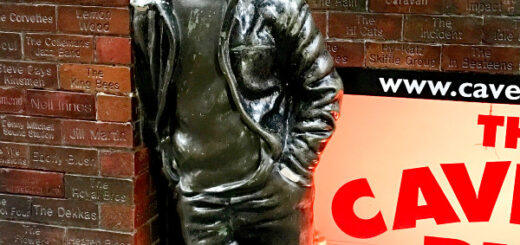





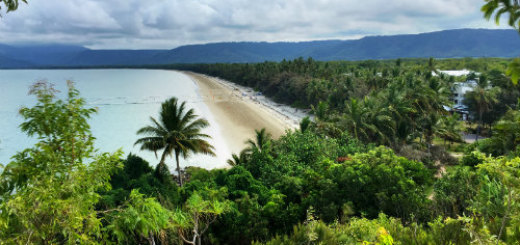
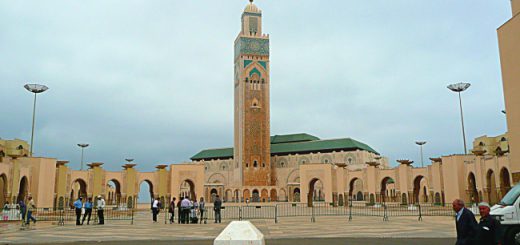
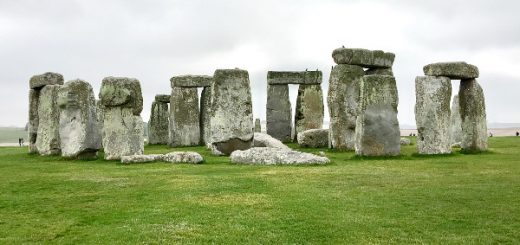
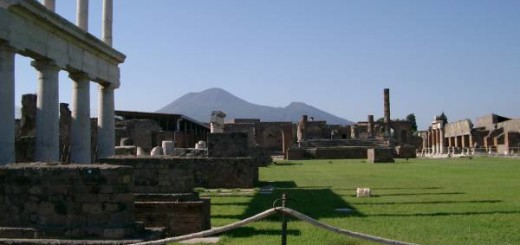


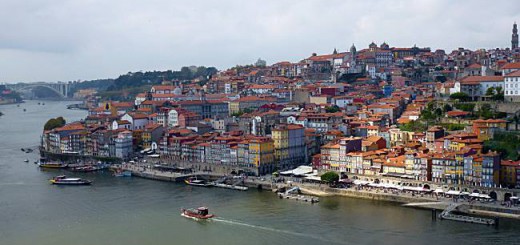




















Hello,
We’re posting an article on our site about tea house culture in China and was wondering if we would be able to use your image of the nine turn bridge teahouse? we would of course give you credit on our site.
Let me know.
Cheers,
Bridget
Hi Bridget
Happy to let you use my photo – thanks for asking.
regards
Liz